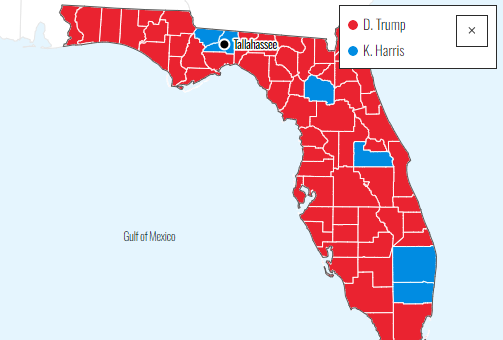As the hurricane season for 2020 begins, the Bahamas is still recovering from Hurricane Dorian, which struck the island last year as a historic Category 5 storm.
A total of 200 people died and billions of dollars in damage was caused - and while the devastation on land will take years to recover from, the recovery under the water may take even longer.
Dr. Craig Dahlgren is a scientist and researcher for the Perry Institute for Marine Science. He’s been studying coral reefs for 30 years in the Bahamas and working with a Palm Beach-based research ship to map the health of 70 reefs in the months before Dorian hit.
After the storm, the group visited 29 of those reefs.
“We assess fish populations, the coral populations and everything else on the seafloor. In some places right near Marsh Harbor where the storm hit the hardest, we had reefs that were totally devastated, completely destroyed,” he said. “Big chunks of reef the size of a car rolling 10, 15 yards from where they used to be. But at other sites just a couple miles away, we could hardly tell that there was a hurricane that came through there at all.”
Using high-resolution photography, Dahlgren’s team mapped out large sections of those reefs to help understand the damage and track how they recover.
“What we can learn is how variable the hurricane impacts are and why they varied the way they did,” Dahlgren said. “We can also learn a lot about what some of the threats are in the coastal zone that might make some reefs more vulnerable to storms.”
Local
Not surprisingly, the reefs closest to areas with a lot of homes destroyed by Dorian were hit the hardest by debris and downed trees.
“Those trees just got knocked over by the storm and just acted like a steamroller and bowled across the reef,” he said.
While nothing compares to the loss of human life on the islands, the coral reefs are vital to the economic engine of the Bahamian people.
“A lot of the attention - and rightly so - is focused on what happened on land, but the long-time recovery of Abaco Grand Bahamas is tied in so closely with the marine environment,” he said. “What we really want to understand what happened to those areas and how they can recover, to look at what these long-term economic impacts are after people start rebuilding their homes. These impacts on coral reefs are still going to be going on for decades probably in places.”
Dahlgren and his team plan on continuing to study the reefs, focusing on the worst hit areas and also to document the damage and recovery of mangroves and sea grasses in the area.



